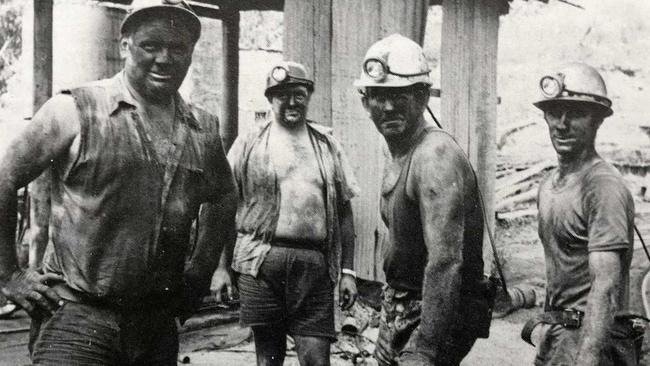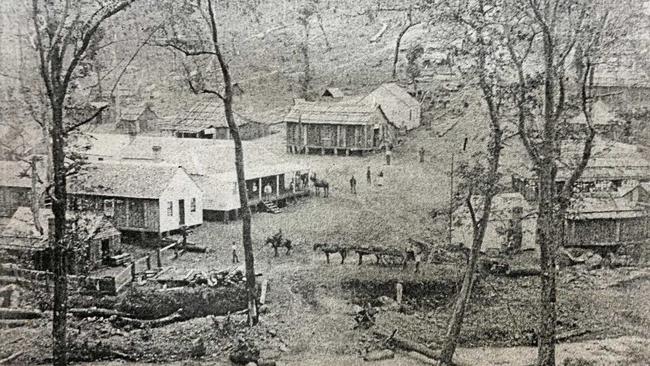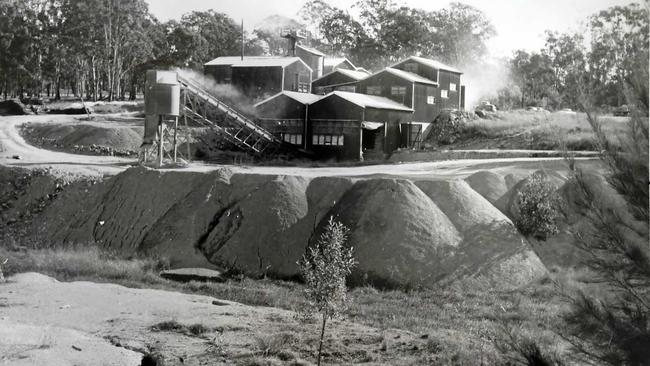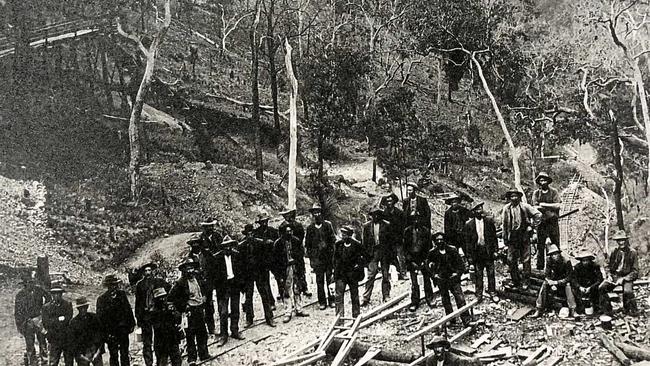Take a look back at Clarence Valley's rich vein of mining
STEP back in time and take a look at the early days of the Clarence Valley, and how mining helped to shape our history

Grafton
Don't miss out on the headlines from Grafton. Followed categories will be added to My News.
FROM sand to stone, gold, copper and coal, the Clarence Valley has had a resource-rich past.
Some of the names like Cangai, Baryulgil and Nymboida will be familiar, while others like the gold mining town of Lionsville have been relegated to the history books.
Step back in time, and take a look at the history of mining in the Clarence Valley:
Lionsville
Once a thriving community, there isn't a lot left at Lionsville.
A town that popped up around the thriving mines, with tennis courts, a cricket pitch, race tracks, hotels, a police station and more, Lionsville was a bundle of life while the Clarence Valley's gold rush was booming.

With Solferino, Garibaldi, Lombardi and Mountain Maid mines among those operating in the Upper Clarence, gold was being dug from our land at a fast rate, mostly by an Italian company.
FULL STORY: Valley's early fortunes found in long-forgotten town
Baryulgil
One of the most devastating parts of the Clarence Valley's mining history is the Baryulgil asbestos mine.
The open-cut small chrysotile asbestos mine was worked by the Bundjalung people.

Children played in the mine's tailings, dust permeated through workers' houses and tailings were spread around the community to settle the dust and provide material for roadworks.
FULL STORY: Asbestos mining in Baryulgil still impacts on community
Cangai
The Cangai Copper Mine is probably one of the Clarence Valley's most well-known historic mining sites.
Nestled along the banks of the Mann River, the Cangai mine was operated by Grafton Copper Mining, 3km east of the Cangai village.

With high-quality ore coming from the mine, Cangai became a hub of copper mining from 1904 to 1917.
FULL STORY: Copper hub paid for itself at Cangai
Nymboida
The old Nymboida colliery, which opened in 1909, originally supplied coal delivered by bullock teams to coastal steamers in Grafton.

The project grew over the years to the point where it had 150 people on the payroll - and supplied 500 tonnes of coal a week to the Koolkhan power station.
FULL STORY: People power kept Nymboida mine running
Sir Walter Mine
In the 1870s, prospectors were leaving the Clarence but by October 1872 the Sir Walter Scott Mine opened on the south branch of the Mann River, three miles above Cangai.
Diggers Camp
A gold mining town, there are still remnants of the camp today, with the two streets named Nugget St and Miners St.
Still largely off the grid, the camp provided a place for miners prospecting in the area in the late 1800s. Jean Foxover, who wrote a history of the town, wrote that German and Chinese families moved to the area to take advantage of the gold rush.
From the 1920s to the 1980s, sand mining was also completed at the site, which involved major landscape changes, especially to the dunes.
Minnie Water
There was considerable sand mining done in the late 1960s at Minnie Water. In 1977, sand mining was banned. There are reports of mining earlier in the 20th century but official records state it began in the 1960s.
Dalmorton
Gold was discovered around Dalmorton during the 1960s as mining spread throughout the Upper Clarence. The greatest activity occurred between 1871 and 1900. While documentation of the mining is poor, historical documents suggest there were 85 main reefs mined.
The town was bustling with people and had 13 pubs and 5000 inhabitants at the height of the gold mining era.
You can still see parts of the town along Old Glen Innes Rd.
Bucca Creek
There was a small mining settlement at Bucca Creek, which quickly developed into a mining town of 5000 people. Shafts eventually became unworkable due to the intrusion of underground water and early pumping equipment was incapable of coping with the inflow.
Originally published as Take a look back at Clarence Valley's rich vein of mining


